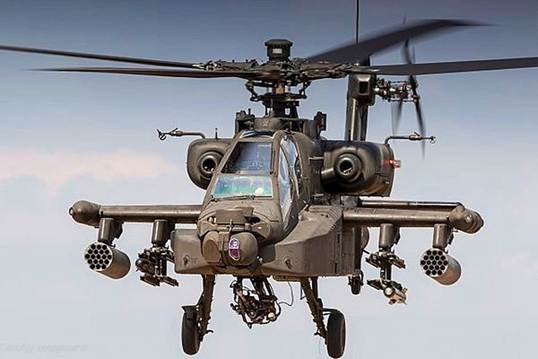Recent Induction
- On July 23, 2025, Indian Army received first batch of 3 Apache AH-64E helicopters from the U.S. at Hindon Airbase.
- Induction conducted under Joint Receipt Inspection Protocol before final deployment.
Relevance : GS 3(Internal Security , Defence )
Deployment Plans
- Will be deployed by Army Aviation Corps in Jodhpur.
- Focus on Western Front (Pakistan border) and high-altitude warfare (e.g., Ladakh, Siachen).
Strategic Advantages
| Capability | Details |
| Firepower | Equipped with Hellfire missiles, Hydra rockets, and 30mm M230 chain gun |
| Avionics | Advanced sensors, radar, night-vision, and electronic warfare capabilities |
| Terrain Versatility | Optimised for high-altitude and all-weather combat operations |
| AI/ISR Integration | Supports network-centric warfare and real-time battlefield visibility |
The Apache is a combat-proven platform, extensively used in Iraq, Afghanistan, and global theatres.
Modernisation Push
- India signed a deal in 2020 for 6 Apache helicopters exclusively for the Army (separate from IAF’s 22 Apaches).
- Apache marks the first heavy-attack helicopter induction for Indian Army aviation.

Strategic Context
- Boosts independent offensive strike capability for Army, especially in:
- Anti-armor operations
- Close air support
- Border skirmishes with China and Pakistan
Comparative Force Modernisation
| Feature | MiG-21 | Apache AH-64E |
| Entry into Service | 1963 | 2025 (Indian Army) |
| Role | Supersonic fighter aircraft | Heavy attack helicopter |
| Manufacturer | Mikoyan-Gurevich (USSR), HAL | Boeing (USA) |
| Retirement Status | Phasing out | Just inducted |
| Technological Status | Obsolete | State-of-the-art |
Strategic Implications for India
- IAF Combat Readiness Challenges
- Squadron strength shrinking to 29 vs. required 42.
- Urgency to expedite Tejas Mk-1A and Rafale deliveries.
- Risks during a two-front conflict scenario.
- Army Air Power Autonomy
- Apache enhances Army’s strike power without relying on IAF.
- Boosts capability in mountain warfare and border conflicts.
- Strengthens India’s response posture in Western and Northern theatres.
- Indigenisation vs. Imports
- While Apaches are imported, Indian push for Atmanirbhar Bharat continues with HAL’s Light Combat Helicopter (LCH) and Rudra.
- Balanced approach needed: Strategic imports + indigenous development.
Conclusion
The MiG-21 phase-out and Apache induction together represent a generational shift in Indian military aviation:
- A legacy platform exits after decades of both glory and tragedy.
- A modern, lethal system enters, enabling new operational doctrines for the Army.
These developments reflect India’s broader military modernisation drive — but also highlight critical gaps (especially in IAF’s force levels) that must be addressed swiftly to maintain credible deterrence.



